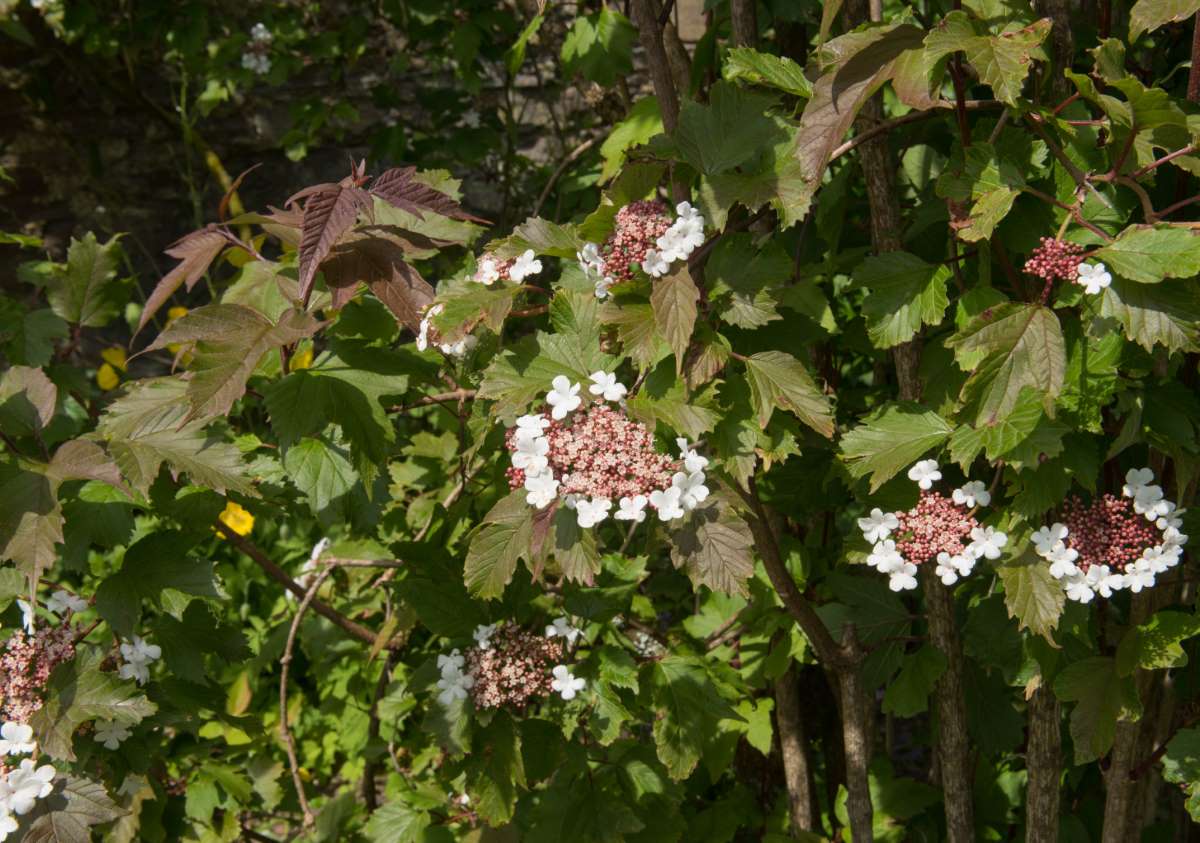Description
Viburnum –
Genus of 150-175 or more evergreen, semi evergreen, and deciduous shrubs, sometimes trees, from thickets and woodland, mainly in North temperate regions, but some extend to Southeast Asia and south America, within the Adoxacea family. They are grown for their fruits, flowers, and some for their autumn coloring. They produce lance to rounded, smooth or toothed edged, sometimes lobed leaves arranged in opposite pairs, occasionally in whorls of 3, they are usually rough and prominently veined. The sometimes strongly fragrant, white or cream or pink flushed or wholly pink flowers are salverform to tubular. They are borne in terminal or axillary panicles, clusters, corymbs, or cymes, which are often spherical or domed, Some species have flowers in flattened heads similar to those of “lacecaps” hydrangeas, in which the small, fertile central flowers are surrounded by larger flat or saucer shaped, sterile flowers. The ornamental fruits are usually spherical or oval and may be red, blue, or black-purple, some are edible others are poisonous.
Viburnums are suitable for a shrub border or woodland garden, hedging, and attracting wildlife. If fruits are desired, plant several seedlings of the same species together.
Grow in any moderately fertile, moist but well drained soil in full sun or partial shade, most are drought tender. Where not hardy, shelter from cold drying winds. Most deciduous Viburnums tolerate hard pruning.
Prone to gray mold (Botrytis), rust, downy mildew, powdery mildew, wood rot, verticillium wilt, leaf spots, dieback, aphids, scale insects, weevils, Japanese beetle, mealybugs, tree hoppers and lepidoptera.
V. sargentii ‘Onondaga’ – Sargent Viburnum– This upright, deciduous shrub grows 10-15’ feet tall and 6- feet wide. It has thick, dark gray fissured, corky bark, that carries maple like 3 lobed, toothed leaves, to 5” long, bronze when young, often turning yellow or red in autumn. Flat lacecap like cymes, to 4” across, with tubular pink flushed white flowers are borne in late spring. The flowers are followed by spherical, bright red fruit, ½” across.
Zones 4-7





